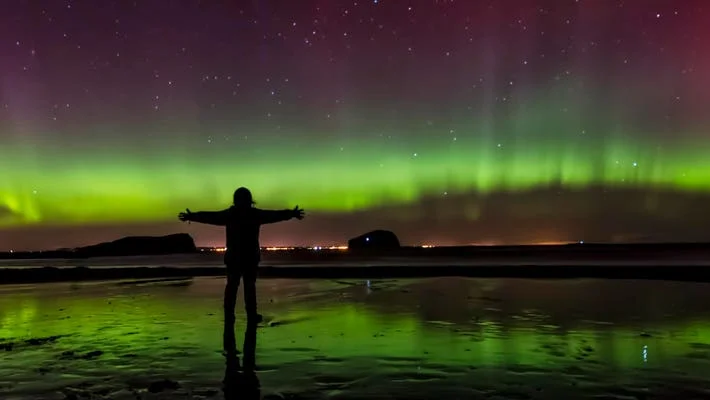
Aurora Alert: Northern Lights May Dance Across Several US States Tonight
Get ready for a celestial spectacle! The Northern Lights, also known as the Aurora Borealis, might be visible across several northern U.S. states tonight, May 23, 2025, thanks to increased solar activity and a potential hit from a coronal mass ejection (CME). This is a rare opportunity for skywatchers in certain regions to witness this breathtaking phenomenon.
According to the National Oceanic and Atmospheric Administration (NOAA), an enhancement of the geomagnetic field could lead to a minor (G1) storm. This is due to significant turbulence in the solar wind caused by a CME that erupted from the sun earlier this week. While forecasters are uncertain about the CME's impact, the possibility of a glancing blow to Earth's magnetic field remains, potentially triggering auroral displays.
Which states could see the show? If the CME interacts with Earth's magnetic field, residents in Washington, northern Idaho, Montana, North Dakota, South Dakota, Minnesota, Wisconsin, Michigan, and Maine may catch a glimpse of the Northern Lights. However, clear skies are essential for optimal viewing. Check NOAA's 30-minute forecast for the latest updates.
The predicted Kp index of 4 suggests pleasing auroral activity for those in the right location. This means the aurora will move further from the poles, become brighter, and exhibit more motion and formations.
Adding to the excitement, Earth is currently in the "Earth strike zone" due to a massive coronal hole facing our planet. Coronal holes allow solar wind to escape, increasing the likelihood of auroral spikes.
This increased solar activity is symptomatic of the current solar maximum, which NASA and NOAA believe the Sun reached in October 2023. Solar maximums are periods of heightened solar activity within the sun's 11-year cycle. They bring an increase in solar flares and CMEs, which can lead to more frequent and intense displays of the Northern Lights.
Tips for viewing and photographing the Northern Lights: If you are in an area where there is a chance to view the lights, NOAA recommends finding a vantage point with an open view of the northern horizon, away from city lights, between 10 p.m. and 2 a.m. local time. Night mode shots are essential for smartphone pictures.
While Mercury doesn't have auroras, other planets like Venus, Mars, Jupiter, Saturn, Uranus, and Neptune do. NASA’s Perseverance rover even spotted auroras on Mars recently. Jupiter showcases especially bright and fast-moving auroras.
Will you be watching for the Northern Lights tonight? Let us know in the comments if you spot them! Share your viewing experiences and photos with us!